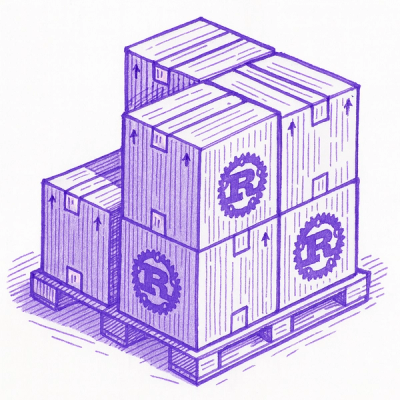
Security News
Crates.io Implements Trusted Publishing Support
Crates.io adds Trusted Publishing support, enabling secure GitHub Actions-based crate releases without long-lived API tokens.
Simple JSON schema definition language in pure JSON.
inferSchema({object}) - creates a schema definition from the JSON object objectcheckSchema({schema}) - checks if a schema definition schema is a valid a6y schemaverifyObject({schema, object}) - checks is an object object satisfies an a6y schema schemaWe tried to develop a definition language that is as simple as possible but still allows for specifying the definition language itself:
verifyObject({object: schemaDefinition, schema: schemaDefinition}).success === true
The following JSON object is a valid a6y schema and specifies how an a6y schema has to look. Mixing meta layers can be quite confusing. It is like you wanted to describe how an English phrase is structured just using English words.
{
"version": "1",
"name": "$",
"type": "struct",
"struct": [
{
"name": "version",
"type": "string"
},
{
"name": "name",
"type": "string"
},
{
"name": "type",
"type": "string"
},
{
"name": "struct",
"type": "list",
"optional": true,
"list": {
"type": "struct",
"struct": [
{
"name": "name",
"type": "string"
},
{
"name": "type",
"type": "string"
},
{
"name": "struct",
"type": "$.struct",
"optional": true
},
{
"name": "list",
"type": "$.list",
"optional": true
},
{
"name": "optional",
"type": "boolean",
"optional": true
}
]
}
},
{
"name": "list",
"type": "struct",
"optional": true,
"struct": [
{
"name": "type",
"type": "string"
},
{
"name": "struct",
"type": "$.struct",
"optional": true
},
{
"name": "list",
"type": "$.list",
"optional": true
}
]
}
]
}
Even though it might seem complicated it is actually quite simple considering it fully specifies the a6y schema language as an a6y schema.
inferSchema({object: 'test'}).schema
{
"version": "1",
"name": "$",
"type": "string"
}
inferSchema({object: [1, 2, 3]}).schema
{
"version": "1",
"name": "$",
"type": "list",
"list": {
"type": "integer"
}
}
Imagine you have a filesystem structure like this:
{
"name": "filesystem",
"files": [
"text.txt",
"image.png",
"audio.mp3"
],
"subfolders": [
{
"name": "logs",
"files": [
"logs1.txt",
"logs2.txt",
"logs3.txt"
],
"subfolders": {
"name": "archive",
"files": [
"oldlogs1.txt",
"oldlogs2.txt",
"oldlogs3.txt"
]
}
},
{
"name": "empty_folder"
}
]
}
In this case you have a potentially infinitely deeply nested structure which needs recursive definition:
{
"version": "1",
"name": "$",
"type": "struct",
"struct": [
{
"name": "name",
"type": "string"
},
{
"name": "files",
"type": "list",
"optional": true,
"list": {
"type": "string"
}
},
{
"name": "subfolders",
"type": "list",
"optional": true,
"list": {
"type": "$"
}
}
]
}
Note the dollar sign $ at the end which refers to the root element and allows for recursive nesting.
FAQs
Specification of the Antology schema.
We found that a6y-schema demonstrated a not healthy version release cadence and project activity because the last version was released a year ago. It has 1 open source maintainer collaborating on the project.
Did you know?

Socket for GitHub automatically highlights issues in each pull request and monitors the health of all your open source dependencies. Discover the contents of your packages and block harmful activity before you install or update your dependencies.

Security News
Crates.io adds Trusted Publishing support, enabling secure GitHub Actions-based crate releases without long-lived API tokens.

Research
/Security News
Undocumented protestware found in 28 npm packages disrupts UI for Russian-language users visiting Russian and Belarusian domains.

Research
/Security News
North Korean threat actors deploy 67 malicious npm packages using the newly discovered XORIndex malware loader.